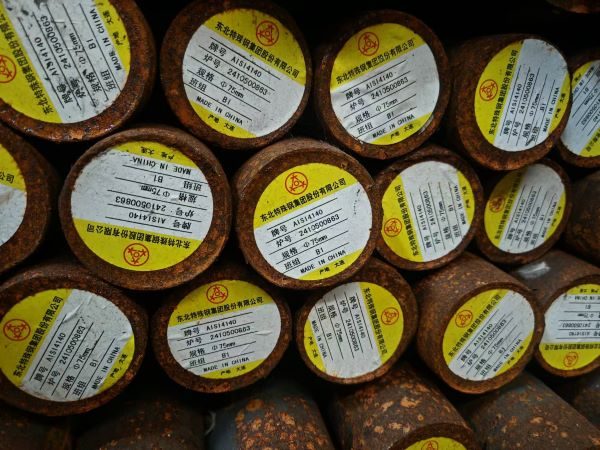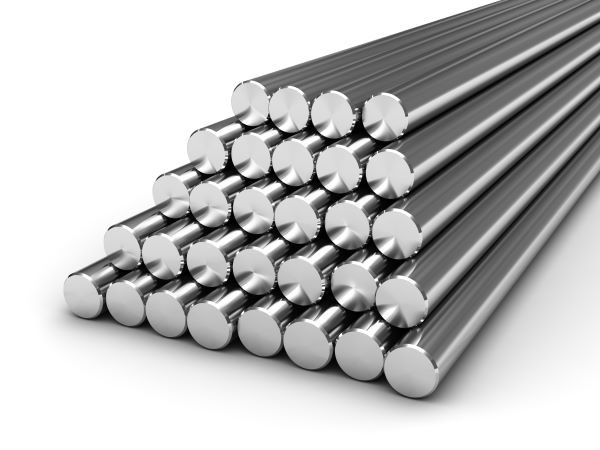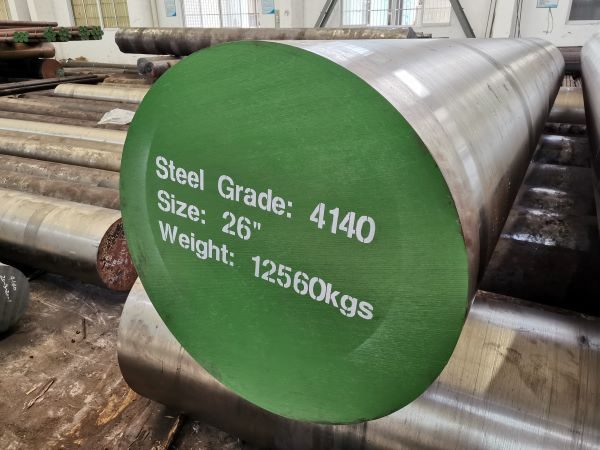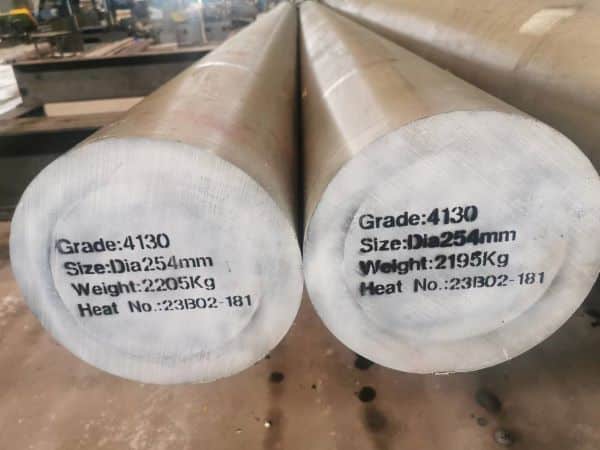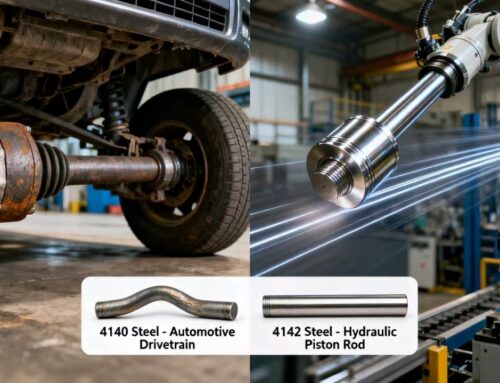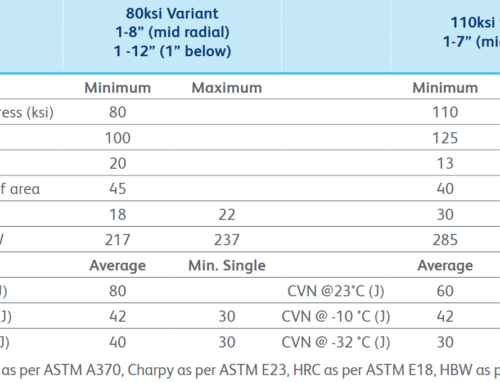The mechanical properties of chromium-molybdenum steels (4130 and 4140) are highly dependent on the heat treatment process. By controlling the heating, cooling and tempering processes, engineers can achieve a precise balance between hardness and toughness. This article will reveal the influence of heat treatment on the properties of these two steels through experimental data, metallographic analysis and engineering cases.
1. Heat Treatment Basis: Process Route and Core Objectives
1.1 Typical process flow
- Annealing: eliminate processing stress and reduce hardness (facilitate cutting).
- Normalizing: uniform structure and fine grains.
- Quenching: rapid cooling to form martensite and maximize hardness.
- Tempering: eliminate quenching stress and restore toughness.
1.2 Core control parameters
- Quenching temperature: 4130 (870-900℃), 4140 (840-870℃).
- Cooling medium: oil quenching (mild), water quenching (violent).
- Tempering temperature and time: determine the final hardness and toughness ratio.
2. Quenching Process: Amplification Effect of Carbon Content Difference
2.1 Hardenability comparison
| Steel type | Ideal quenching medium | Critical diameter (50% martensite) | Maximum hardness (HRC) |
| 4130 | Oil | 25 mm | 52 |
| 4140 | Water or fast oil | 75 mm | 58 |
Source of difference:
The higher carbon content (0.38-0.43%) of 4140 significantly improves hardenability, forms more lath martensite, and has a higher hardness peak.
2.2 Microstructure evolution
- 4130 steel:
After quenching, it is mainly composed of lath martensite, and the content of retained austenite is about 5-8%. - 4140 steel:
High carbon leads to an increase in the proportion of twin martensite, and the retained austenite is less than 3%, with higher hardness but increased risk of brittleness.
3. Tempering Control: The Game Between Hardness and Toughness
3.1 The influence of tempering temperature on performance
- Low-temperature tempering (150-250℃):
– 4130: HRC 48-50, impact energy 25 J.
– 4140: HRC 54-56, impact energy 18 J.
Application scenarios: cutting tools, high wear-resistant parts. - Medium-temperature tempering (350-500℃):
– 4130: HRC 38-42, impact energy 50 J.
– 4140: HRC 45-48, impact energy 35 J.
Application scenarios: gears, shaft parts. - High-temperature tempering (550-650℃):
– 4130: HRC 28-32, impact energy 80 J.
– 4140: HRC 32-36, impact energy 60 J.
Application scenarios: pressure-bearing pipelines, structural frames.
3.2 Temper brittleness zone warning
4140 steel is prone to second type temper brittleness when tempered at 350-575℃, and the impact energy drops by more than 30%.
Solution:
– Rapid water cooling after tempering;
– Add 0.05% molybdenum (modified 4140Mod).
4. Practical Cases: Selection of Different Heat Treatment Routes
4.1 Case 1: Aircraft landing gear (4130 steel)
- Requirement: high strength (HRC ≥ 40) + high toughness (impact energy ≥ 45 J).
- Process: 900℃ oil quenching + 400℃ tempering for 2 hours.
- Result: HRC 42, impact energy 52 J, fatigue life exceeds 10^7 times.
4.2 Case 2: Oil drill bit (4140 steel)
- Requirement: extreme wear resistance (HRC ≥ 55) and impact resistance.
- Process: 860℃ water quenching + 200℃ tempering for 1.5 hours + cryogenic treatment (-80℃).
- Result: HRC 57, residual austenite reduced to 1%, underground life increased by 3 times.
5. Contradictory Reconciliation: How to Balance Hardness and Toughness?
5.1 Process optimization strategy
- Graded quenching: 4140 steel is first placed in a 300℃ salt bath for 10 seconds, then air-cooled to reduce deformation and cracking.
- Isothermal quenching: 4130 steel is isothermally treated in the bainite zone (350℃) to obtain a bainite/martensite mixed structure, and the impact energy is increased by 20%.
- Combined tempering: First low temperature (200℃) and then medium temperature (450℃) tempering, taking into account both surface hardness and core toughness.
5.2 Material modification suggestions
- 4130 steel: surface carburization (increase the surface carbon content) to achieve “hard outside and tough inside”.
- 4140 steel: Add 0.1% nickel (improve tempering stability) to extend high temperature service life.
6. Inspection & Quality Control
6.1 Key inspection indicators
- Hardness gradient: cross-section hardness difference needs to be <3 HRC (to avoid stress concentration).
- Metallographic rating: martensite grade ≤3 (according to ASTM E112 standard).
- Impact test: -20℃ Charpy V-notch impact energy ≥27 J (mandatory requirement for aerospace).
6.2 Common Defects and Countermeasures
- Quenching cracks: 4140 steel is prone to occur when quenching with water. Using polymer quenching liquid can reduce the risk.
- Insufficient tempering: manifested as hardness fluctuations >2 HRC, furnace temperature uniformity needs to be calibrated (within ±5℃).
Summary
Heat treatment is the key to unlocking the performance potential of 4130 and 4140 steels:
- 4130 steel is more suitable for scenarios that require weldability or medium and low temperature toughness, and can achieve the best cost-effectiveness through medium temperature tempering.
- 4140 steel, with its high carbon advantage, is irreplaceable in the field of pursuing extreme hardness and high temperature stability, but be wary of tempering brittleness.
In the future, with the popularization of intelligent temperature control technology and composite heat treatment process, the performance boundary of chromium-molybdenum steel will be further broken.

